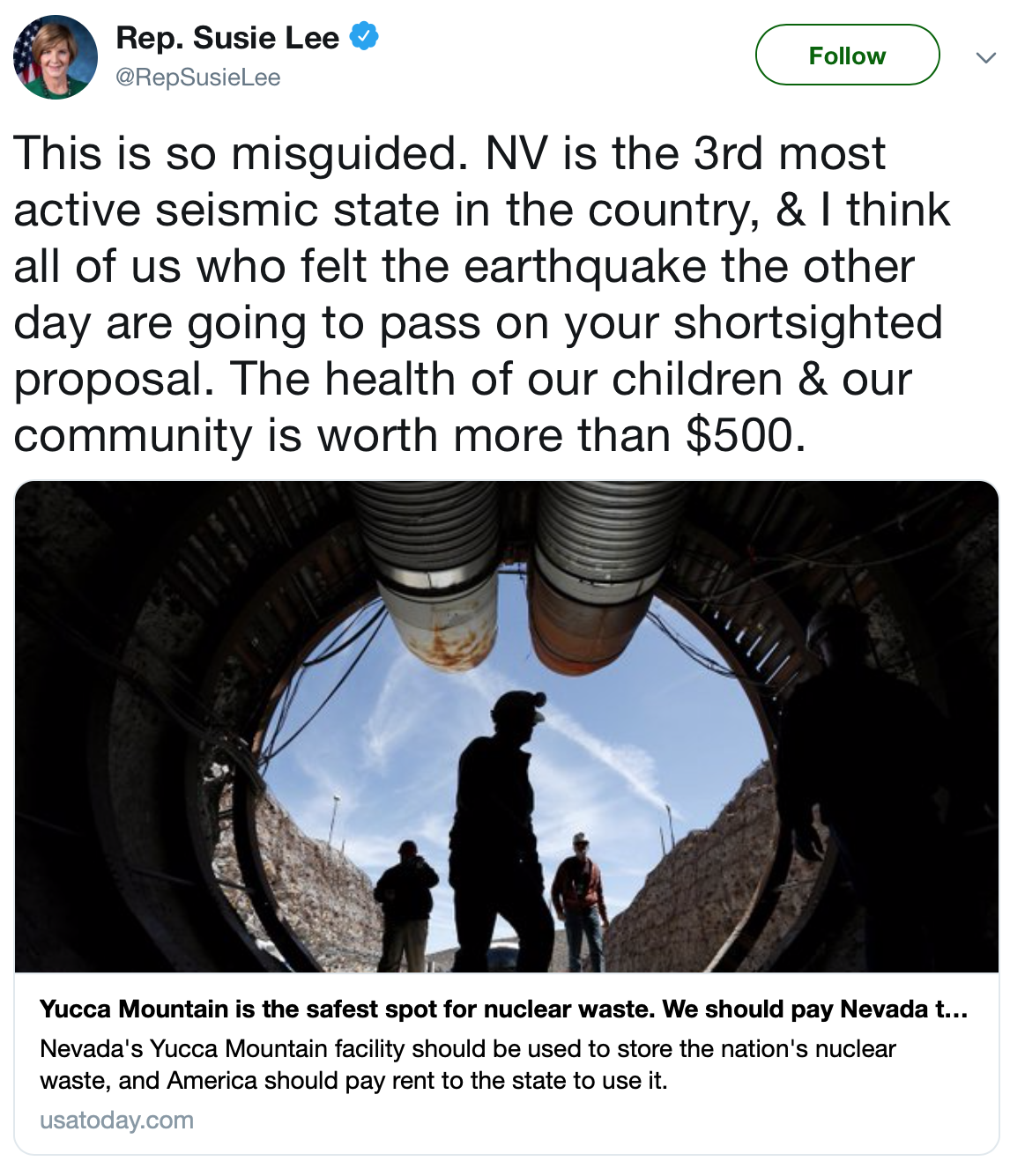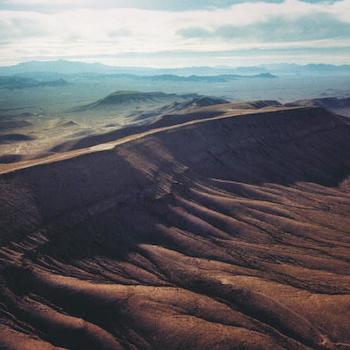Last month, I wrote an op-ed for USA Today about Yucca Mountain.
The argument I made, in a nutshell, is that the nuclear waste storage facility that has already been built is safe and should be opened for business. However, because Nevadans are (improperly) worried about the safety of the Yucca facility, I suggested that the federal government offer to pay each of the state's citizens $500 each year (for 10 years) as "rent." This provides financial compensation for the risk of hosting the site, even though the risk is exceedingly small.
The usual counterargument is, "F*** you."

Admittedly, I don't have a good response to that.
 Nevada Congresswoman Susie Lee also weighed in. While her counterargument is at least civil, it spreads disinformation about geology and public health. Let's fact-check her statement.
Nevada Congresswoman Susie Lee also weighed in. While her counterargument is at least civil, it spreads disinformation about geology and public health. Let's fact-check her statement.
"NV is the 3rd most active seismic state in the country"
True but irrelevant. Nevada is a big state. What matters isn't if it's seismically active but if earthquakes would damage the nuclear waste storage facility. The answer is "no."
In 2009, Scientific American addressed this concern. According to the article, the Department of Energy says that "frequent, if low-level, seismic activity does not pose a threat to potential safe nuclear storage some five miles (eight kilometers) under Yucca Mountain." The article concludes, "[T]he proposed Yucca Mountain repository could withstand whatever earthquakes Mother Nature might muster."
"shortsighted proposal"
False, this isn't a short-sighted proposal. It's a long-term solution. Yucca Mountain will be able to safely store nuclear waste for thousands of years. What is short-sighted is what we are doing now, i.e., storing waste on site at 80 different nuclear facilities in 35 states. As I explained in my USA Today piece, soon the Department of Energy will be required to pay billions of dollars in "damages" to nuclear power utilities because of the Department's failure to collect the waste.
"The health of our children & our community is worth more than $500."
Oh yes, the children. I didn't think of that.
An absolutely excellent, must-read article by physicist Dr. Richard Muller explains the science behind nuclear waste disposal. We routinely say that nuclear waste needs to be secure for about 10,000 years. That's because, by then, most of the radioactivity has decayed away. But in reality, after merely 300 years, the level of radioactivity has declined by roughly 90%. So, the question isn't, "Can we guarantee that Yucca is eternally secure forever and ever amen?" but "Can we ensure that Yucca is safe for about 300 years?" And that answer is yes.
Dr. Muller really slams the door shut by comparing the risk posed by a leak at Yucca Mountain to the risk posed by uranium found naturally in the soil:
"Colorado, where much of the uranium is obtained, is a geologically active region, full of faults and fissures and mountains rising out of the prairie, and its surface rock contains about a billion tons of uranium. The radioactivity in this uranium is 20 times greater than the legal limit for Yucca Mountain, and it will take more than 13 billion years—not just a few hundred—for the radioactivity to drop by a factor of 10. Yet water that runs through, around, and over this radioactive rock is the source of the Colorado River, which is used for drinking water in much of the West, including Los Angeles and San Diego. And unlike the glass pellets that store the waste in Yucca Mountain, most of the uranium in the Colorado ground is water-soluble. Here is the absurd-sounding conclusion: if the Yucca Mountain facility were at full capacity and all the waste leaked out of its glass containment immediately and managed to reach groundwater, the danger would still be 20 times less than that currently posed by natural uranium leaching into the Colorado River. [Emphasis added]
The science is utterly conclusive: Yucca Mountain is not a threat to Nevadans' health. Grandstanding and fearmongering by politicians is why America has a completely backward energy policy. The good news is that a smart energy policy is really easy. We just have to elect politicians who care more about physics than feelings.




